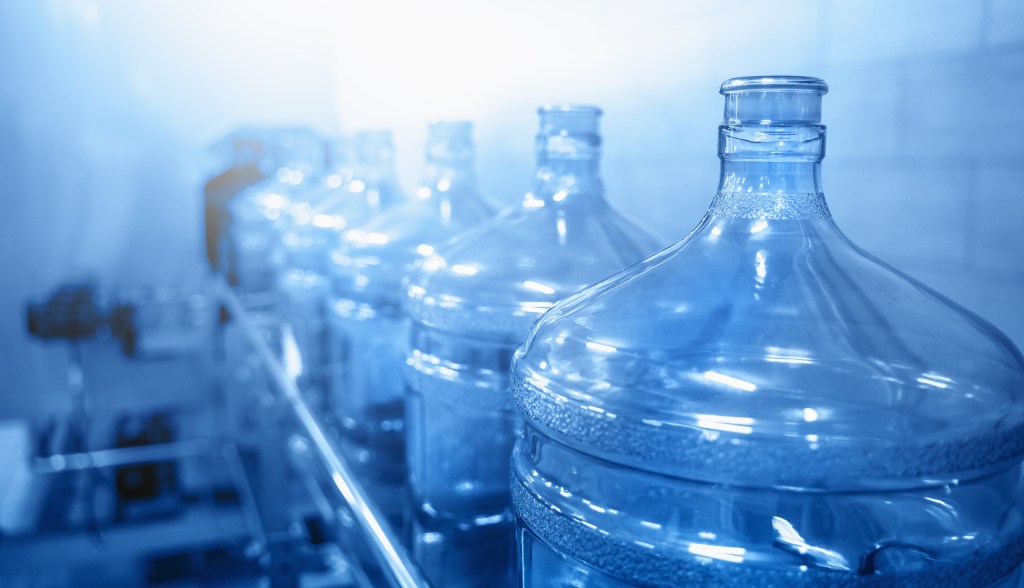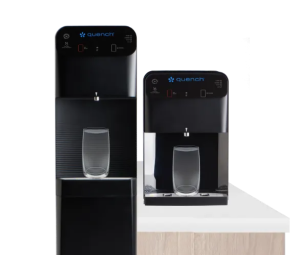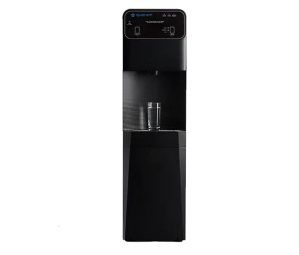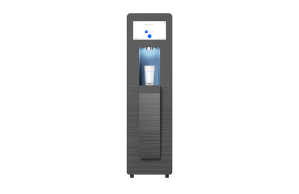
What is virtual water?
Virtual water is the often-unseen, or embedded, water used throughout the entire life of a product — from the moment raw materials are grown or extracted until items reach your office. That includes water irrigation, cooling machinery, powering factories and everything in between.
Through research into the virtual water definition, you’ll realize that your organization’s water footprint stretches well beyond taps and faucets. Precisely pinpointing virtual water use opens the door to impactful adjustments that keep budgets under control and protect our planet’s valuable resources for the long haul.
Examples of virtual water
These hidden water flows show up in all kinds of workplace essentials — even in areas that seem routine. Recognizing where embedded water hides helps office managers and business decision-makers weigh their choices with a fresh perspective. Below are a few standout examples.
Example #1: Paper products and printing
Plenty of steps go into crafting a single sheet of paper:
- Trees require water to grow
- Mills depend on water to transform wood into pulp
- Additional processes clean and dry the final product
A busy office that prints contracts, proposals or event materials can accumulate a substantial hidden water cost. Switching to digital processes, scanning and archiving documents instead of printing, and using double-sided defaults can whittle that water footprint without disrupting operations.
Example #2: Bottled water and plastic packaging
Single-use plastic bottles and jugs are a striking illustration of virtual water. In fact, it may take two to five jugs of water just to create just one gallon of water, which includes:
- Petroleum extraction
- Forming the plastic
- Preparing the bottle for use
Another bottle’s worth often goes into filling, washing, and sealing each container. While these practices might not raise or lower an office’s direct consumption, the cumulative burden can be significant — especially in workplaces that stockpile large quantities of bottled water for employees or visitors.
Example #3: Break room foods and beverages
Coffee beans, tea leaves, chocolate and other snacks generally rely on:
- Irrigation
- Processing
- Shipping
All these steps tap into water supplies, and meat or dairy products often need feed crops that heighten water usage further. A balanced approach — like sourcing from water-conscious suppliers or introducing foods that require less irrigation — can shift resource consumption without undermining workplace morale.
Example #4: Textiles and office uniforms
Office uniforms, branded T-shirts, seat upholstery and even window treatments share a water-intensive backstory. Cotton often needs plenty of irrigation, while synthetic materials use water during manufacturing and dyeing processes.
Organizations that frequently order apparel or replace textiles may not notice these upstream resource costs. Choosing long-lasting materials, exploring recycled fibers or reducing bulk orders supports a healthier balance between brand promotion and sustainable resource use.
How to help reduce virtual water
Tackling these embedded water streams can strengthen sustainability initiatives and support larger environmental goals. Small, thoughtful changes have a ripple effect, especially in offices with many employees or frequent supply orders. Below are strategies suited to a wide range of workplace needs.
Track water expiration dates and stock rotation
Many workplaces store cases of bottled water to anticipate events, emergencies or daily staff use. Unfortunately, those bottles can expire or linger unused in a closet. That scenario wastes the resources involved in manufacturing, filling and delivering them.
Keeping track of purchase dates, rotating stock and setting reminders to use older items first will help reduce waste. Keep an eye out for our Does Water Expire? resource, which will explain how best to store water and maximize shelf life.
Consider alternatives to single-use plastics
Although no research confirms that bottleless coolers directly cut total water usage, reducing plastic packaging can still make an impact.
For example, bottle-free water coolers help minimize the environmental toll by eliminating the need for disposable bottles or plastic jugs. Adding options like a sparkling water dispenser can further enhance sustainability efforts while providing employees with more choices. For workplaces aiming to reduce packaging waste and avoid routine restocks, bottle-free water coolers offer a streamlined, eco-friendly solution — even if overall water consumption remains similar.
Reevaluate printing and document management
Paper remains a mainstay in traditional office workflows, yet going paper-light preserves water by cutting the need for large pulp and paper operations. Routine tasks, such as scanning documents, sending them electronically, and using digital signatures, can ease dependency on paper. When printing is unavoidable, try using recycled paper or narrower margins for certain projects. Even a small reduction in printed pages can make a cumulative difference.
Explore lower-water food choices
Modifying break room offerings doesn’t require upending everyone’s favorite treats. Introducing options known for requiring less irrigation — such as certain grains or responsibly sourced coffee — can reduce virtual water use without creating a dramatic shift in office culture.
Optimize equipment lifespans
Frequent water equipment upgrades or replacements can indirectly expand a company’s water footprint if older equipment is discarded prematurely. Routine maintenance, signage indicating proper use, careful planning around hardware refresh cycles and thoughtful recycling procedures can trim that hidden resource demand. Prolonging the life of each machine reduces the frequent need for new products that carry their own embedded water costs.
A thoughtful approach to hydration with Culligan Quench
Fresh, high-quality drinking water serves as a cornerstone of a positive, engaged workplace. Culligan Quench takes pride in helping organizations improve hydration through modern, well-designed systems — think filtration solutions and bottle-free water coolers — that cut back on single-use plastics.
Moving away from disposable bottles won’t necessarily lower your overall water consumption, but it mitigates the resource-heavy processes tied to plastic production. Paired with smart stock management, these options can create an environment where employees stay refreshed while the planet’s vital resources receive the care they deserve.
What is the virtual water situation at your organization?
Awareness of what virtual water is shapes a culture of mindfulness. In turn, this nudges organizations toward smarter choices, such as rotating bottle-free water coolers, thoughtfully choosing suppliers, adopting reusable containers, and favoring digital documents over paper.
Schedule a free consultation with Culligan Quench to explore hydration solutions customized according to your sustainability goals. Our team champions innovations that reduce plastic reliance and keep employees happily hydrated.
Recommended products
Culligan Quench has an advanced suite of point-of-use systems that are designed to meet the needs of workplaces of all shapes and sizes. Here are some products we recommend for your business.
Q8 Touchless Bottleless Water Cooler
Available with quenchWATER+ electrolyte water

Q12 Touchless Bottleless Water Cooler
Available with quenchWATER+ electrolyte water
